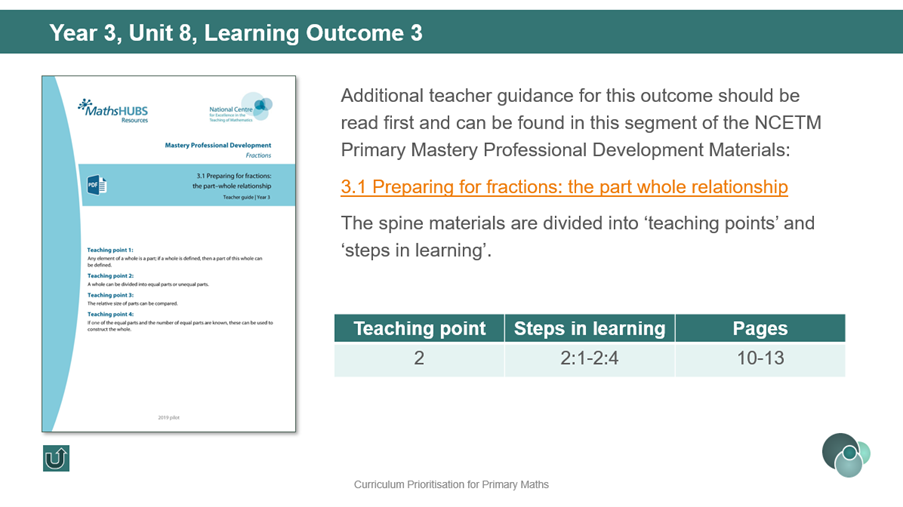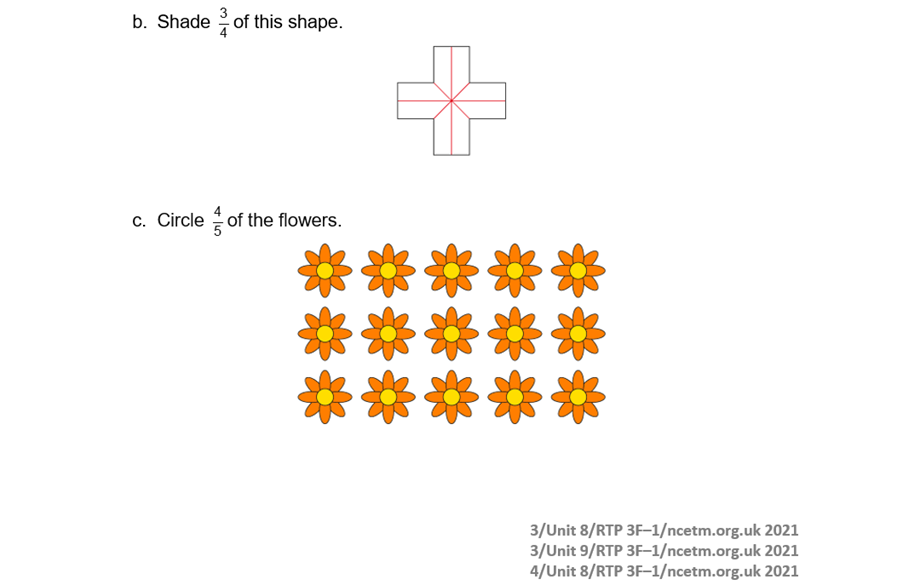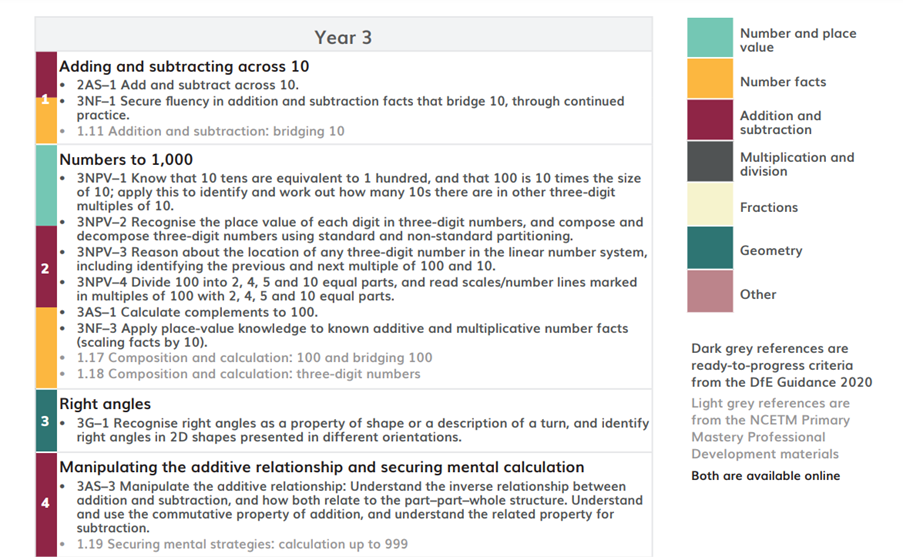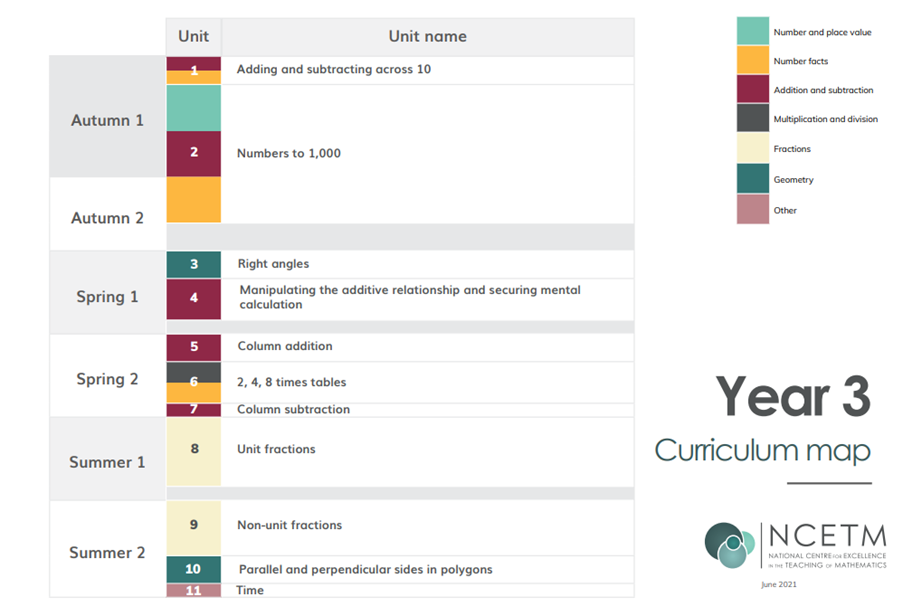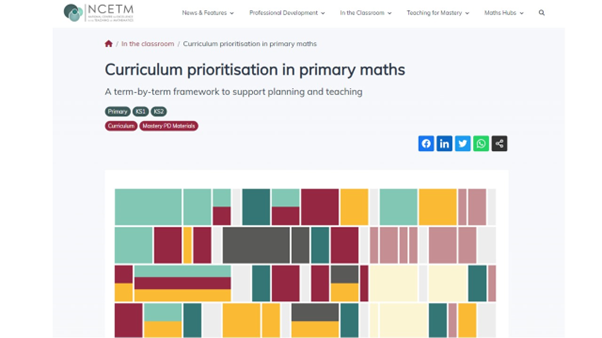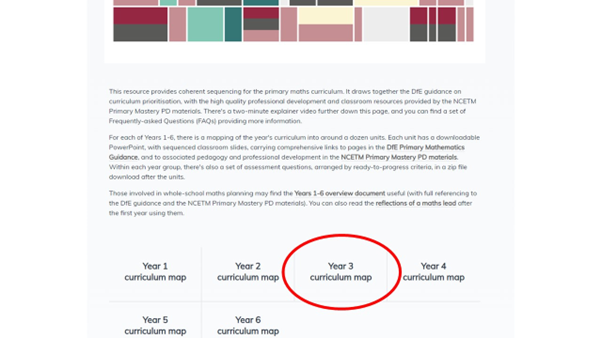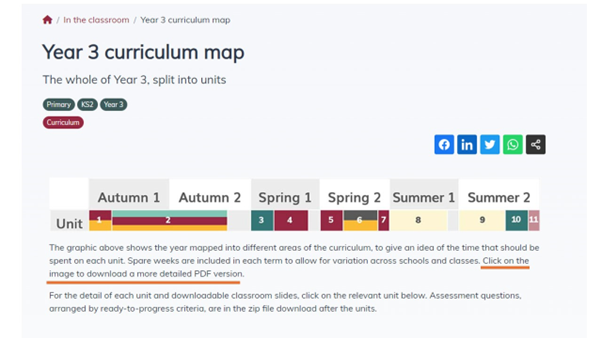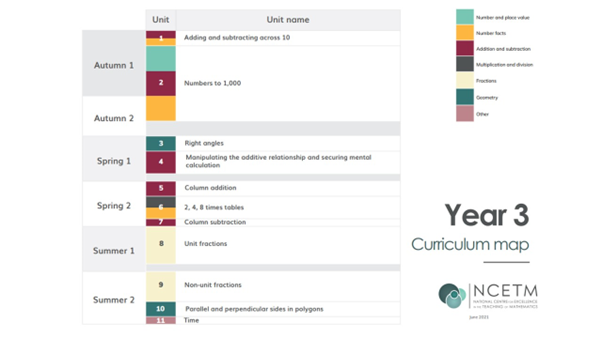Make sense of the Curriculum Prioritisation materials
Ever wondered where to begin with the Primary CP materials? This step-by-step guide will take you from website download to classroom activity
17/07/2024
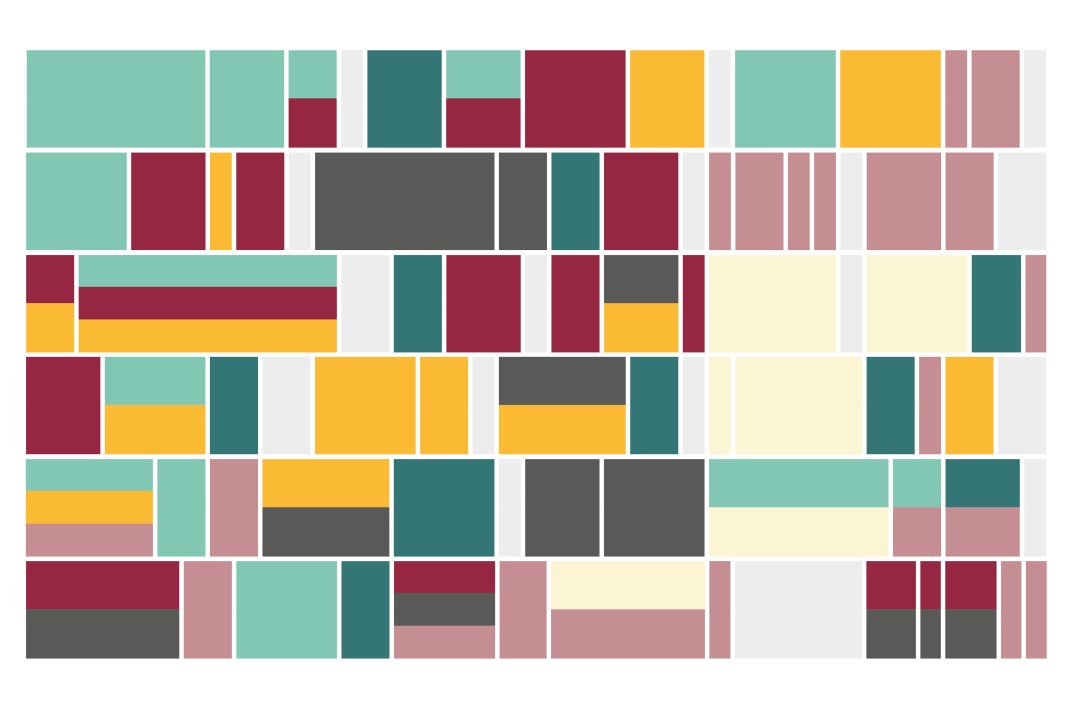
If you’ve ever thought about using the Primary Curriculum Prioritisation materials (sometimes known as the ‘NCETM materials’, ‘NCETM resources’ or ‘CP materials’), but gone to download them and been overwhelmed and not known where to start, let us help. We will take you through what the materials are, how to get the best out of them, and where you can find everything you need to integrate them into your planning and teaching. Grab a cuppa, and perhaps a pen and paper, and read on…
1. Understand what the materials are
The CP materials are a term-by-term framework for Years 1 to 6. They aren’t a scheme of work, and don’t include any worksheets; instead, they bring together both CPD and classroom-facing elements. They map the maths curriculum for the year into around a dozen units, and are driven by the ready-to-progress criteria in the DfE Primary Maths Guidance. You can find them in the In the Classroom area of the website, or by searching ‘curriculum prioritisation’.
- Each unit has a PowerPoint file with sequenced classroom slides, and includes links to the DfE Primary Maths Guidance and the NCETM Professional Development materials. The PD materials act as a sort of ‘teacher guide’ for the CP slides.
- There is also a set of assessment questions, arranged by ready-to-progress criteria, which cover all the units for a year group.
- For maths leads, a six-page PDF provides an overview of the materials for Years 1-6 including full details of ready-to-progress criteria.
For teachers, there is a PDF which maps the units across the six half terms of the academic year for your year group, and shows which topics are covered in each unit.
Tap/click images to enlarge
If you’ve got two minutes and you’re still not quite sure what the materials are and why you might want to download them, watch our explainer video.
2. Check the FAQs
Before you download the materials or choose a year group or topic, take a moment to read the FAQs. They will help you understand the purpose and context of the CP materials before you begin, and will ensure your first look at the PPTs and documents is an informed one.
3. Choose a year group, and a topic area
We don’t recommend simply downloading all the materials. Start small and focused, and get your head around one unit and how to use it before you download any more. For the purposes of this feature, we have chosen Year 3, Unit 8 – Unit fractions. It’s the eighth of 11 units, and it’s a five-week unit.
To get to it from the homepage on the NCETM website, you can either type the unit title in the search box, or visit In the Classroom, and click ‘Curriculum prioritisation in primary maths’, which takes you to the main page for all the CP materials:
Tap/click images to enlarge
From there, scroll down to ‘Year 3 curriculum map’, click on it, and you’ll be taken to the page for all the Year 3 resources:
Before you choose your unit, click the graphic at the top of the page which shows the year broken down into terms, and lots of coloured blocks, which represent different topics:
This will open a document (PDF) which shows you how the units span the academic year, and which topics are covered in which units.
4. Explore the learning outcomes for your unit
Once you know where your unit comes and the topic(s) it tackles, click on it, and scroll down the page to the learning outcomes. These are all the things that your pupils should be able to do by the end of the unit, broken down into small steps, in order of teaching.
You should spend some time comparing the learning outcomes with the ready-to-progress criteria for the topic. This will enable you to see what pupils need to have learned before this unit, and what they will go on to learn. Note the flow of learning, and the reviewing of learning.
Working with your colleagues, ask these key questions to understand how your current scheme of learning would address the progression of learning in this topic.
- How does our current scheme flow from one year to another?
- How do we review learning and progress?
- Using the overview document, what do we notice about how the content of this topic/unit in each year group relates to the content in other year groups?
5. Explore the ready-to-progress criteria in detail
Using the ready-to-progress criteria, you can see what your pupils will have learned before they started each year group. The DfE guidance document lays out all the ready-to-progress criteria by strand (topic) and year group, so you can see how the learning in each area progresses from one year to the next.
You’ll notice that the overview documents for the CP materials cross-reference both the ready-to-progress criteria, and the Primary Mastery PD Materials. Before you start teaching a topic using the CP materials, you can both see where a topic comes using the ready-to-progress criteria, and understand more about the teaching of a topic using the PD materials. They provide pedagogical guidance to support your teaching.
6. Work backwards from the assessment questions
Having understood both what your pupils will need to learn in a topic, and explored what they will have learned before (and go on to learn after), you need to think about how you will make sure they develop a deep understanding of the topic.
Take a look at the assessment questions for your year group and topic. You’ll find them if you scroll down the webpage with the curriculum map for your year group. Exploring the assessment questions will help you understand what your pupils are working towards knowing and understanding, so when you plan your lessons, you can ensure that their learning will prepare them for demonstrating deep understanding of the topic.
7. Work through the CP materials PowerPoint for your topic
Although it seems like a long time coming, now you should look at the specific PowerPoint for the topic area you plan to teach your year group. The PowerPoint files can seem intimidating as they can be very long, but don’t be put off. Take some time to go through the slides yourself first, then with colleagues. Discuss how your pupils might respond, and how you might address any misconceptions.
If you need to unpick anything in more detail, go back to the PD materials. They provide a pedagogical framework which ‘wraps around’ everything covered in the CP materials, and it’s handy to use them together.
Tackle one learning outcome at a time. Think about how you might use the slides either for professional development or with your class. Remember that not everything is exhaustive – it is up to you to decide which slides to use with your class, and the teaching that will accompany them. They are there to support you, not to replace or challenge your own professional knowledge and pedagogy.
We have suggested Year 3 Unit 8 (Unit fractions) as a possible topic to explore and use to model planning. The Year 3 curriculum map webpage is the place to find this topic, and all the topics for that year group, so take some time to familiarise yourself with how the materials are presented on the page.
- EXPLORE: Year 3 curriculum map
8. Reflect on your teaching
After planning and teaching lessons using the CP materials, reflect on how the lesson went and what your pupils learned. Did they think, say and understand what you expected them to? Do you need to refine your teaching in the future? Are there any other materials – CP, PD or assessment – on the NCETM website that could help you?
***
As any good teacher knows, your planning is never ‘finished’. We hope we have given you an insight into how to use some of the materials available on our website to help you think about your teaching approaches, plan lessons, and assess your pupils’ learning. This isn’t designed to be instructional or comprehensive; it’s just a way to think about approaching materials which are extensive and can feel overwhelming for busy teachers.
The best way to get to grips with many of our materials is to join a Work Group with your local Maths Hub. There you will benefit from the expertise of a Mastery Specialist or other local leader of maths education who will walk you through these materials and more, step by step. To get involved, contact your local Maths Hub.
- GET IN TOUCH: Find your hub
Ready to start using the CP materials?
Take some time to explore what they can offer you and your school
DiscoverWith thanks to Denise Heaton at Turing NW Maths Hub for her input into this feature.
